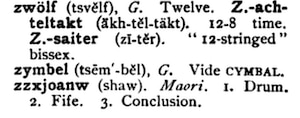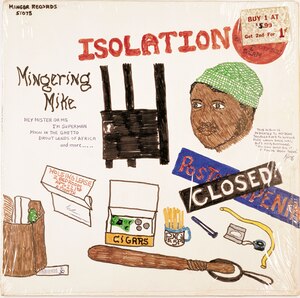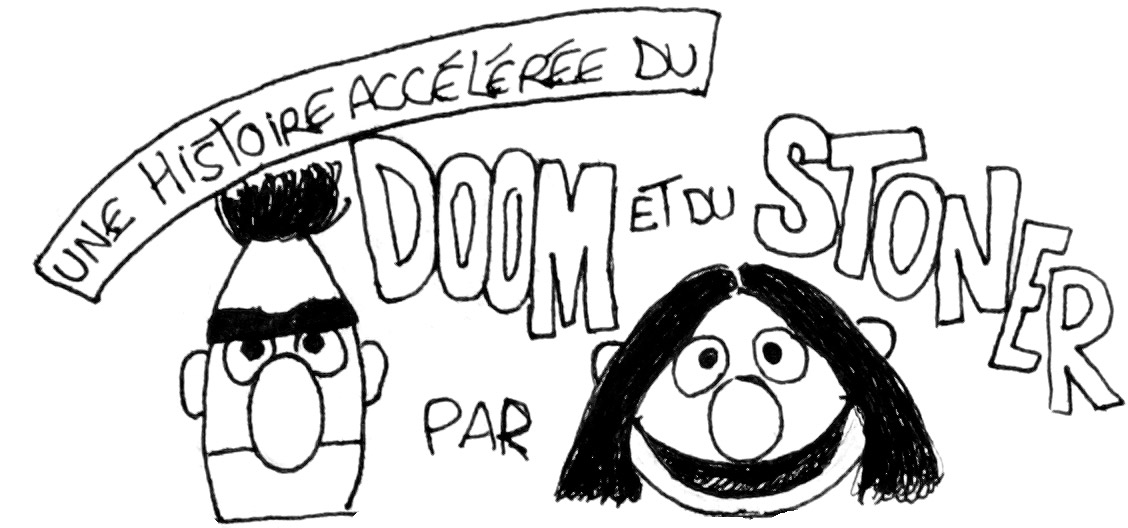A Real Guide to Imaginary Music
Thomas Bey William Bailey uncovers some of the greatest fake music ever
Why make up the existence of music? There are many motivations. People love a clever hoax (i.e. showing up the gullibility of critics or the undiscerning nature of music consumers). But it can just as easily be the province of determined dreamers who lack the means to make themselves heard. Some have done it to test the cultural waters, determining whether or not the listening public is ready for something out of the ordinary. Whatever the reason, we’re living in an era of viral marketing and catfishing, so we’re sure to see more of it than ever. Here are just a few of the more distinctive examples of the imaginary music phenomenon.
Charley’s Girls
Disillusioned Düsseldorf pranksters Charley’s Girls started their career by sending press releases to Sounds before they had even attempted a rehearsal. Concurrently, they also printed one of the first German punk fanzines, The Ostrich. (Both the band and zine names were nods to Lou Reed.) The Ostrich was the perfect vehicle to catalog the band’s imaginary exploits, which included a self-deflating flirtation with fascist imagery and vague promises that calculated-to-offend songs like “My Future in the SS” and “Judensau Bop” might eventually materialize on vinyl.
The band very likely would have continued as a fictional proposition, had Alfred Hilsberg, Sounds’ German correspondent, not taken their PR at face value and invited them to perform at a showcase for the nascent German punk and New Wave scene. Having somehow managed to cobble together some songs for this performance, the band went on to earn the endorsement of feted conceptual artist Martin Kippenberger, and were catapulted into becoming a real life phenomenon. This marked the first time that a “fake band” helped to kickstart an entire scene. The membership of Charley’s Girls later splintered to form Mittagspause and Fehlfarben, two of the most influential forces in the Neue Deutsche Welle.
The Mind Invaders
At the dawn of the 1980s, in the northeastern Italian town of Pordenone, the artist Piermario Ciani was one of the more eclectic characters in an already eclectic and deviously humorous federation of musical groups known as the Great Complotto (other members included such names as Andy Warhol Banana Technicolor, Waalt Diisney Production and Sexy Angels.)
Ciani would eventually become one of the founding members of the multimedia TRAX ensemble (whose unique “modular” aesthetic helped to shape the collaborative network-as-artwork ideals of Mail Art and Cassette Culture), and his musical project The Mind Invaders acted as a convenient bridge from the former organization to the latter. Like Charley’s Girls, The Mind Invaders put a great deal of work into crafting a public image, yet never took to the public stage: Ciani drafted up full-sized posters for the project, printed up lyric sheets and distributed questionnaires about the Mind Invaders’ activities.
Seen in the light of his subsequent work with TRAX, whose many conceptual works and creative games caricatured mass production and industrial design techniques while also encouraging an atmosphere of unbridled fun and endless personal connectivity, the Mind Invaders are best viewed as a satire of marketing and advertising tactics. Case in point: when the Mind Invaders finally did consent to put out an audio product (the Onda 400 7-inch compilation featuring some other Great Complotto alumni), Ciani’s contribution was a single unfaltering dial tone.
Mingering Mike
The Washington, D.C. recluse known as Mingering Mike only became known around 2003, after his work was discovered by collectors Dori Hadar and Frank Beylotte at local flea markets. Once his past work had been unearthed, it became clear that he was perhaps the most prolific soul / R&B phenomenon to never actually perform or record. While apparently living in dread of being drafted for military service, Mike whiled away countless hours by hand-drawing literally hundreds of LP covers for both himself and for personal acquaintances (such as his stalwart singing sidekick “The Big D.”)
The fantasy world that emerged from his efforts was a lurid, celebratory glimspe into late 1960s / early 1970s Afro-American culture and politics, in which Mike drew himself as a kind of James Brown / Marvin Gaye hybrid and offered up paeans to everything from Bruce Lee to underprivileged urban children. Mingering Mike “released” (or “drop-lifted”) his recordings into area record bins complete with shrinkwrap, with labels indicating the hit songs and with unanimously positive reviews appended to the outer sleeves. Hoping to keep the illusion alive to the very end, Mike even went to the trouble of drawing “grooves” on the hand-cut, non-playable cardboard discs that substituted for real record albums inside the one-of-a-kind handmade sleeves.
“Strong Scene Productions” vs. H&M
The extreme heavy metal underground has spent the better part of its existence attempting to distance itself from any consensus morality and mass appeal. However, the culture’s steadfast adherence to an instantly identifiable visual presentation has made it a choice target for parody, and – eventually – for marketability to more casual consumers who haven’t properly sworn their blood oath to all things “kvlt” and “grim.”

This was the case when the men’s fashion chain H&M launched a spring 2015 line of t-shirts featuring logos of non-existent extreme metal groups, along with appropriately apocalyptic graphic features. Eventually, some promotional text emerged from an articulate PR agent named “Ville Huopakangas,” crediting “Swedish underground metal promotion agency” Strong Scene Productions for brokering this unlikely marriage of fashion-scorning metal and a major clothing retailer.
“Huopakangas” proudly saluted H&M’s commitment to “collecting together all of the works of these long forgotten jewels of metal music that never hit it big to the masses until now.” While this, on its own, would be a significant entry in the history of heavy metal’s marketability, things got stranger when it was revealed that a successful professional metaller – Henri “Trollhorn” Sorvali of Moonsorrow and Finntroll – was the mastermind behind said promotion agency.
The weirdness was ratcheted up even further when an official webpage for one of the fake bands were found to be adorned with Nazi imagery: H&M representatives claimed no knowledge of this, and gradually Sorvali confessed to fabricating “Strong Scene” as a means of voicing his displeasure at H&M’s marketing of a music genre that they were insufficiently knowledgeable about. The whole episode rapidly deteriorated into a convoluted in-joke at H&M’s expense, with hastily recorded, YouTube-exclusive demos surfacing for the fake bands, and with commenters across the Internet claiming to have actually seen the bands performing “live” and in their prime.
Piotr Zak
Hans Keller and Susan Bradshaw were the duo behind the “Piotr Zak Affair”: In June of 1961, the BBC broadcast a 12-minute Mobile for Tape and Percussion by the wunderkind Zak who, though only 22 years of age, was already “one of the most controversial figures in contemporary music.”
In an experiment intended to be the prelude to a more serious debate about just how rigorous contemporary composition really was, the BBC programmers behind the “Zak” fiction simply broadcast a set of completely random taped sounds which were advertised as being played by two performers (“Claude Tessier” and “Anton Schmidt”) live in the studio.
Prior to letting the public in on the joke, though, Mobile was panned mercilessly by a handful of critics. Instead of leading to a discussion on contemporary classical music, it was followed by a radio show in which Keller admitted the fraud in conversation with two of those critics.
Maori “Zzxjoanw” players
Rupert Hughes, the uncle of billionaire and aviator Howard Hughes, had the same relentless ambition as his more famous nephew: Rupert was a playwright, film director, anti-Communist agitator, technocrat and musical composer. His experience with composition led him to write a number of well-received music appreciation books.

These were intended as serious and authoritative references, although there was one glaring exception. At the tail end of the encyclopedia of musical terminology included in Hughes’ 1903 The Musical Guide, there is an entry for a Maori instrument called the Zzxjoanw.
Though many of his contemporaries might have taken Hughes on his word that such a thing existed, the entry listed it as both a “drum” and a “fife.” Even more confusingly, the same entry also counts the word “conclusion” as a definition. Meanwhile, Hughes’ own suggested pronunciation for the zzxjoanw – “shaw” – was remarkably close to “p’shaw,” the period equivalent to “phhhht.”


